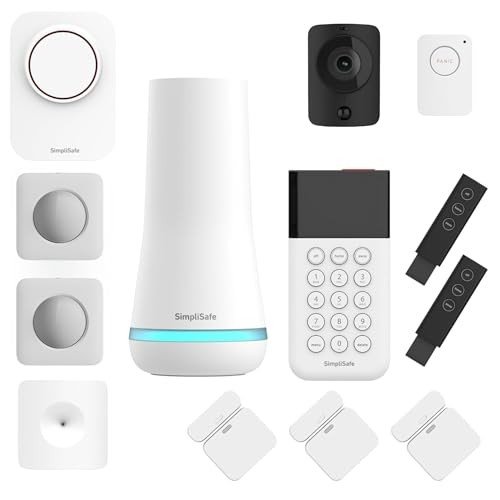Traditional Lighting in the UK: A Comprehensive Overview
Traditional lighting holds a treasured location in the homes and public spaces of the United Kingdom. With its capability to stimulate nostalgia, beauty, and warmth, traditional lighting fixtures use not just visual appeal but likewise useful value. This short article looks into the different types of traditional lighting typical in the UK, their history and evolution, popular styles, and how to include them into modern design.
A Historical Perspective on Traditional Lighting
The advancement of lighting in the UK has been substantial. From the flickering flames of candle lights and oil lamps to the advent of gas and electric lights, the journey is as remarkable as it is informing.
Key Milestones in Lighting History:
- Candles (Before 1800s): The earliest kind of synthetic light, utilizing tallow or beeswax.
- Oil Lamps (Late 18th Century): These became popular in homes and theaters, providing brighter illumination than candles.
- Gas Lighting (Early 19th Century): Revolutionized public and street lighting before electricity took precedence.
- Electric Lighting (Late 19th Century): Marked the transition to modernity, with incandescent bulbs slowly changing older forms.
Each of these advancements paved the way for traditional lighting, which still includes ancient strategies into contemporary designs.
Types of Traditional Lighting
Traditional lighting can be classified into several distinct types, each with its special qualities.
1. Chandeliers
Chandeliers are often the focal point of a room. They come in different styles, from ornate Victorian styles to simple, rustic models.
Popular Features:
- Crystal embellishments
- Iron framework
- Various bulb types
2. Wall Sconces
Wall sconces provide both creative flair and soft lighting. They can be used in corridors, living spaces, or restrooms, enhancing the environment of a space.
Typical Styles:
- Candle-style sconces
- Brass or iron fixtures
- Vintage-inspired designs
3. Table Lamps
Table lamps embody the flexibility of traditional lighting as they can fit into any room. Varying from basic designs to elaborate pieces, they are ideal for checking out nooks, side tables, or desks.
4. Floor Lamps
Comparable to table lamps in style and function, floor lamps can create cozy corners in a home. Vintage styles frequently consist of tripod bases or complex patterns.
5. Lanterns
Though frequently related to outdoor settings, traditional lanterns can likewise be used indoors for a rustic touch. They come in different materials including wood and metal.
Incorporating Traditional Lighting into Modern Decor
In a world progressively leaning towards minimalism and modern styles, traditional lighting still holds its ground. lightingandlamps is to maintain a balance. Here are some tips for integrating traditional lighting into a contemporary home:
1. Mix Styles
Integrate traditional lighting with modern furniture to develop an eclectic room. For example, a vintage chandelier can be hung above a smooth dining table.
2. Use Dimmer Switches
To control the ambiance, set up dimmer switches that allow for soft lighting, which complements both traditional and modern interiors.
3. Choose Mixed Materials
Select lighting fixtures that integrate different products, such as a wood lamp with a metal or glass base, to bridge the gap between old and brand-new.
4. Highlight Architectural Features
Usage traditional fixtures to highlight distinct architectural features in your home. For circumstances, hanging a vintage lantern in a hallway with exposed brick improves its rustic appeal.
5. Integrate Natural Elements
Select styles that incorporate natural materials such as wood or wrought iron. These aspects tend to blend well with modern decor while keeping a traditional style.
Table: Comparison of Traditional Lighting Types
| Lighting Type | Description | Typical Materials | Typical Settings |
|---|---|---|---|
| Chandeliers | Decorative ceiling fixtures, frequently elaborate | Crystal, metal | Dining-room, ballrooms |
| Wall Sconces | Mounted fixtures that provide ambient light | Brass, iron | Hallways, living spaces |
| Table Lamps | Portable lamps for tables and desks | Glass, ceramic | Bed rooms, offices |
| Floor Lamps | Standalone lamps for corner lighting | Wood, metal | Living spaces, dens |
| Lanterns | Rustic or vintage lights | Wood, metal | Patios, gardens |
Regularly Asked Questions
1. What is traditional lighting?
Response: Traditional lighting refers to light that embody historical or traditional styles, often characterized by the usage of ornate materials, detailed patterns, and a warm aesthetic.
2. How can I preserve traditional lighting fixtures?
Answer: Regular cleaning and periodic deep cleansing are essential. For fixtures with glass or crystals, utilize a mild glass cleaner. For metal components, guarantee you use appropriate cleansing options that will not harm the surface.
3. Are traditional lighting fixtures energy-efficient?
Response: Many traditional fixtures can accommodate modern LED bulbs, which offer better energy efficiency. Constantly examine compatibility when changing to LED choices.
4. Can I mix traditional lighting with modern design?
Answer: Yes, mixing traditional lighting with modern décor can develop a distinctively welcoming area. Balance is vital; choose complementary styles to preserve visual consistency.
5. What is the very best way to select traditional lighting for my home?
Answer: Consider your home's overall design, the function of the space, and personal taste. Take measurements to make sure proper sizing and select products and colors that harmonize with existing decoration.
Traditional lighting works as a long-lasting link to history, workmanship, and looks, proving that classic styles have their rightful place, even in the middle of developing patterns. Understanding the numerous kinds of traditional lighting and their application can assist property owners produce welcoming areas that reflect both sophistication and warmth, effortlessly blending the past with today.

